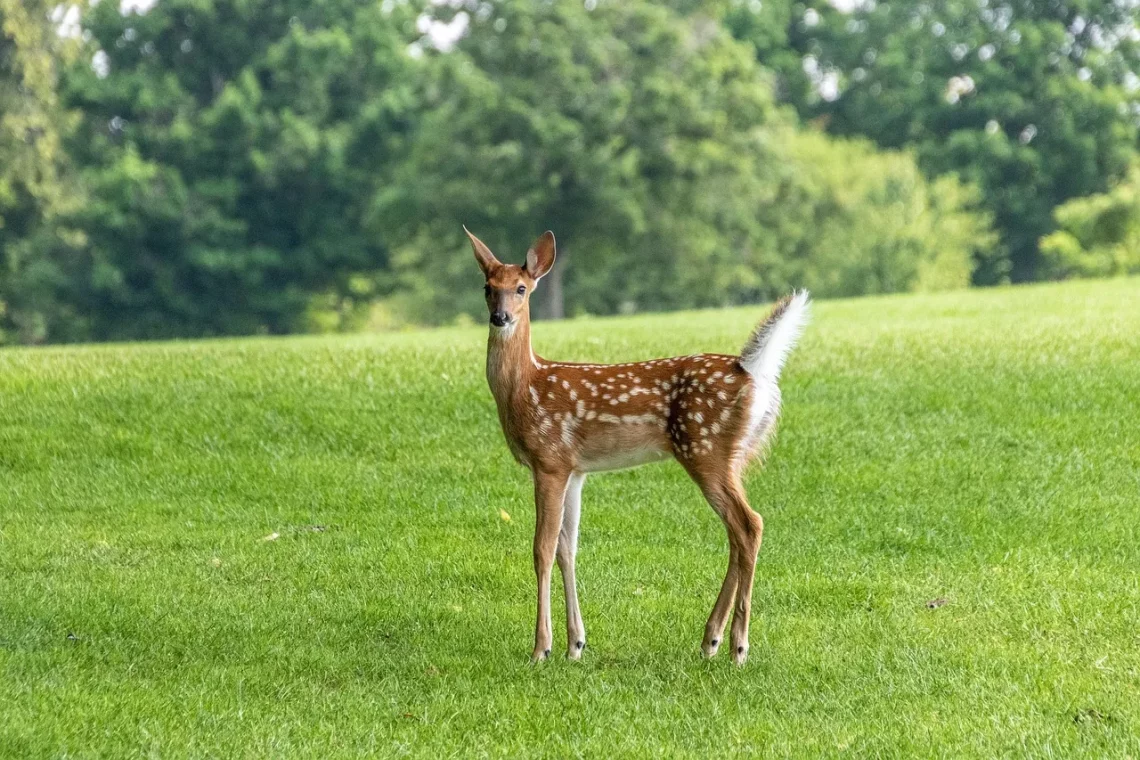
Do Deer Eat Celery? Understanding Their Diet and Preferences
Deer are fascinating creatures that inhabit a variety of environments, from dense forests to open grasslands. As herbivores, their diet is primarily composed of plant material, which they forage for in their natural habitats. The adaptability of deer allows them to thrive in different ecosystems, and their feeding habits can vary based on seasonal availability and environmental conditions. Understanding what deer eat is crucial not only for wildlife enthusiasts but also for those interested in agriculture and gardening, as deer can be both beneficial and detrimental to crops and landscapes.
In the wild, deer have evolved to consume a wide range of vegetation, including leaves, fruits, nuts, and various types of grasses. This diverse diet helps them to obtain essential nutrients needed for their growth and reproduction. Interestingly, their preferences can also shift based on the time of year. During spring and summer, deer tend to favor tender, young shoots and leafy greens, while in autumn and winter, they may rely more on woody browse and stored food sources like acorns. This article delves into the specifics of deer diets, including whether celery is a part of their preferred food choices.
Understanding the Natural Diet of Deer
Deer are ruminants, which means they have a specialized digestive system that allows them to process a wide variety of plant materials. Their stomachs are divided into four compartments, enabling them to break down tough plant fibers effectively. This adaptation is crucial for consuming fibrous vegetation such as leaves, twigs, and bark, which make up a significant portion of their diet.
In their natural habitats, deer are opportunistic feeders, meaning they will eat whatever is readily available. Their diet typically consists of a mix of grasses, herbs, shrubs, and trees. In the spring, deer often seek out fresh greens, as these tender plants are rich in nutrients and water content, essential for their health after the long winter months. As summer progresses, they continue to enjoy a variety of forbs and leafy plants, which provide necessary vitamins and minerals.
In the fall, deer begin to shift their focus towards foods that will help them build fat reserves for the winter. Acorns, nuts, and fruits become key components of their diet during this time, as these energy-dense foods are crucial for survival in harsher conditions. In winter, when food sources are scarce, deer rely more on the bark of trees and woody shrubs, demonstrating their ability to adapt to seasonal changes.
Additionally, the availability of different food sources can significantly influence deer behavior and movement patterns. They often travel considerable distances in search of food, especially in areas where their natural habitat has been altered by human activity, such as urban development or agriculture.
Do Deer Eat Celery? Analyzing Their Preferences
While deer are known to consume a wide range of plant materials, celery is not typically a preferred food source. Celery, belonging to the Apiaceae family, is not a natural part of a deer’s diet. However, that does not mean deer will completely avoid it if it is readily available. Deer are curious animals and will explore new food sources, particularly in times of scarcity.
In general, deer prefer foods that are high in protein, fiber, and moisture. Celery, while crunchy and hydrating, lacks the necessary nutrients that deer seek in their natural foraging. Instead, they tend to gravitate towards leafy greens, alfalfa, clover, and other nutrient-rich plants. These options not only provide better nutritional value but also align more closely with their natural feeding habits.
However, it’s worth noting that deer may nibble on celery if it is found in gardens or landscaping. In suburban areas, where deer may encounter cultivated plants, they might sample a variety of vegetables out of curiosity or hunger. If you’re growing celery in your garden and are concerned about deer, it’s essential to consider fencing or other deterrents to protect your plants, as deer can quickly decimate a vegetable patch if they find it appealing.
In summary, while deer may occasionally eat celery, it is not a staple or preferred part of their diet. Understanding their dietary preferences can help gardeners and landowners make informed decisions about what plants to cultivate and protect from potential deer browsing.
The Impact of Seasonal Changes on Deer Diet
Seasonal changes play a crucial role in shaping the diet of deer. As the seasons transition, so do the types of vegetation available, which directly affects deer feeding behavior. Each season brings different challenges and opportunities for these animals, necessitating adjustments in their foraging habits.
In spring, as the snow melts and the ground thaws, deer emerge from winter survival mode. This season is marked by the growth of fresh, tender shoots and a variety of flowering plants. Deer take advantage of this abundance, focusing on nutrient-rich greens that help replenish their energy and body condition after a long, harsh winter. The availability of young leaves and buds makes this a critical time for deer to replenish their fat reserves.
Summer presents its own set of challenges. While there is plenty of foliage, the heat can affect the water content of plants, making hydration a priority for deer. During this time, they continue to seek out high-protein plants, as well as fruits and berries that ripen in the warmer months. The lushness of summer vegetation allows deer to maintain their energy levels and prepare for the upcoming breeding season in the fall.
As autumn arrives, deer begin to switch their focus toward acorns, nuts, and other energy-dense foods. This seasonal shift is essential for building fat reserves that will sustain them through winter. The rich carbohydrates found in these food sources are crucial for maintaining body weight and overall health during the colder months when food may be scarce.
Winter, on the other hand, is a challenging time for deer. The availability of fresh forage diminishes significantly, forcing them to rely on woody browse and the bark of trees. During this period, deer may also engage in behaviors such as yarding, where they congregate in areas with more abundant food sources to increase their chances of survival.
Understanding these seasonal dietary patterns can help wildlife enthusiasts and landowners create environments that support deer populations. Planting native vegetation that aligns with deer preferences throughout the year can encourage healthy foraging behaviors and contribute to the overall well-being of local deer herds.
Managing Deer Populations and Their Feeding Habits
As deer populations continue to grow in many regions, the management of their feeding habits becomes increasingly important. Overabundant deer can lead to significant ecological imbalances, including damage to native plant species and increased vehicle collisions. Understanding their dietary preferences and behaviors can assist in developing effective management strategies.
One approach to managing deer populations is through controlled hunting, which helps to maintain a healthy population size. This practice can reduce the pressure on local ecosystems, allowing native plants to thrive and reducing competition for food resources. Additionally, responsible hunting can contribute to local economies and promote conservation efforts.
Another strategy is habitat management. Landowners can implement practices that promote the growth of native plants that are beneficial to deer while deterring them from damaging gardens and crops. Planting deer-resistant species and using fencing or natural barriers can help protect valuable landscaping while still providing deer with a suitable habitat.
Education is also a crucial component of deer management. By understanding deer behavior and dietary needs, communities can work together to find solutions that balance the needs of wildlife with those of human populations. Initiatives such as community gardens that incorporate deer-resistant plants can help mitigate conflicts between deer and landowners while promoting biodiversity.
In conclusion, while deer may sample a variety of foods, including celery, their natural diet consists of a diverse range of plant materials that vary with the seasons. By adopting effective management practices and fostering an understanding of deer behavior, we can create harmonious coexistence between humans and these remarkable creatures.
**Disclaimer:** This article is for informational purposes only and is not intended as medical advice. For any health-related concerns or dietary inquiries, please consult a qualified healthcare professional.




